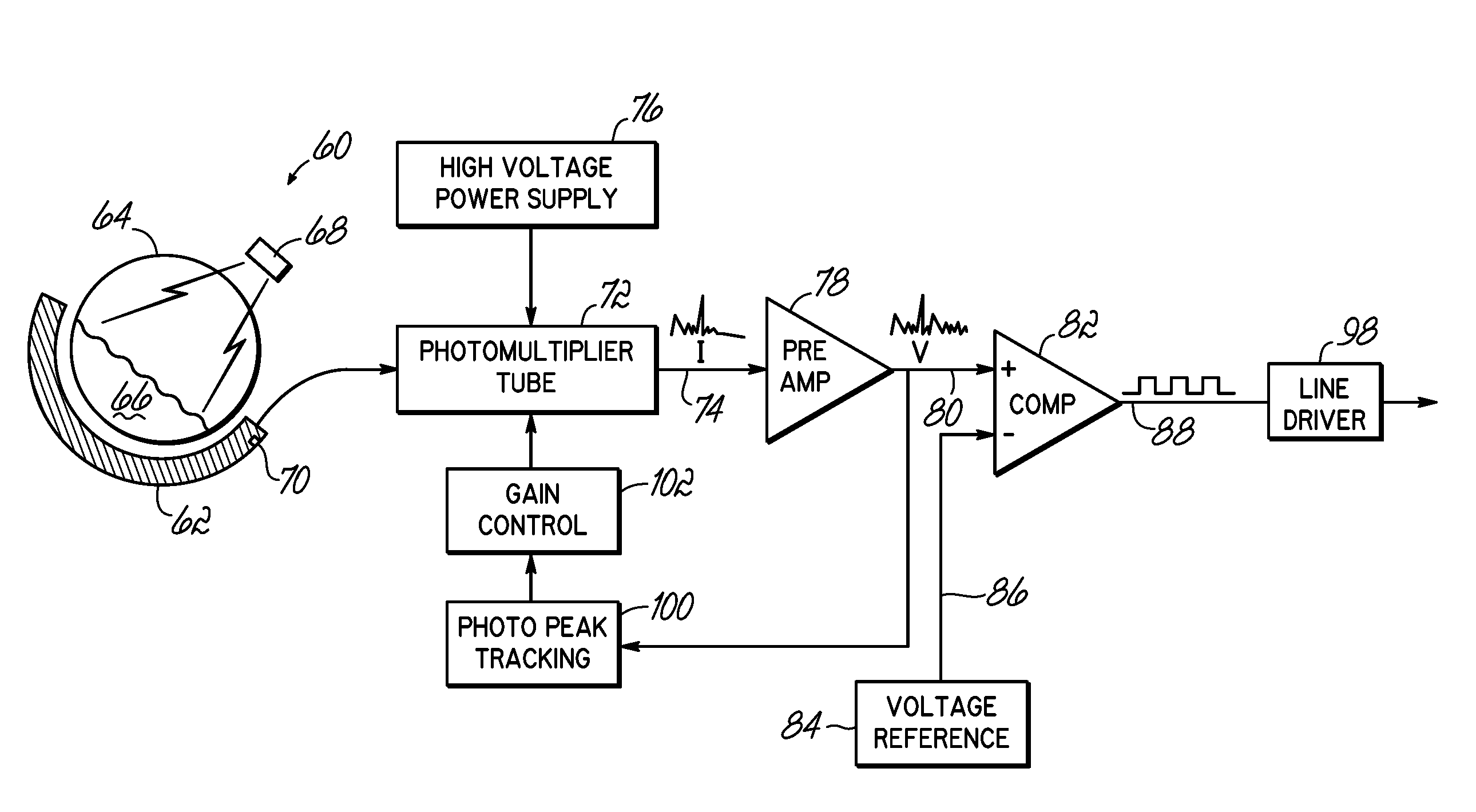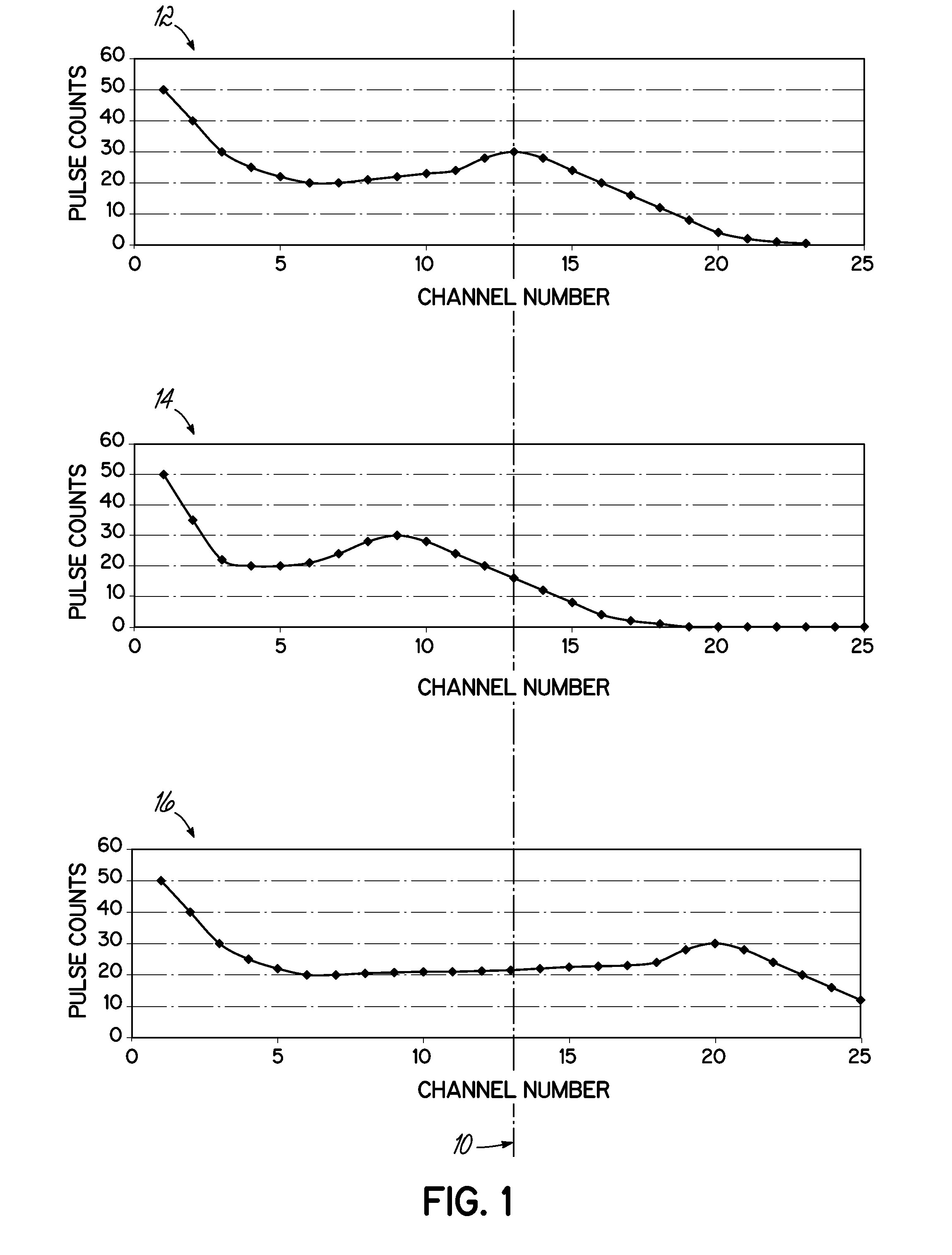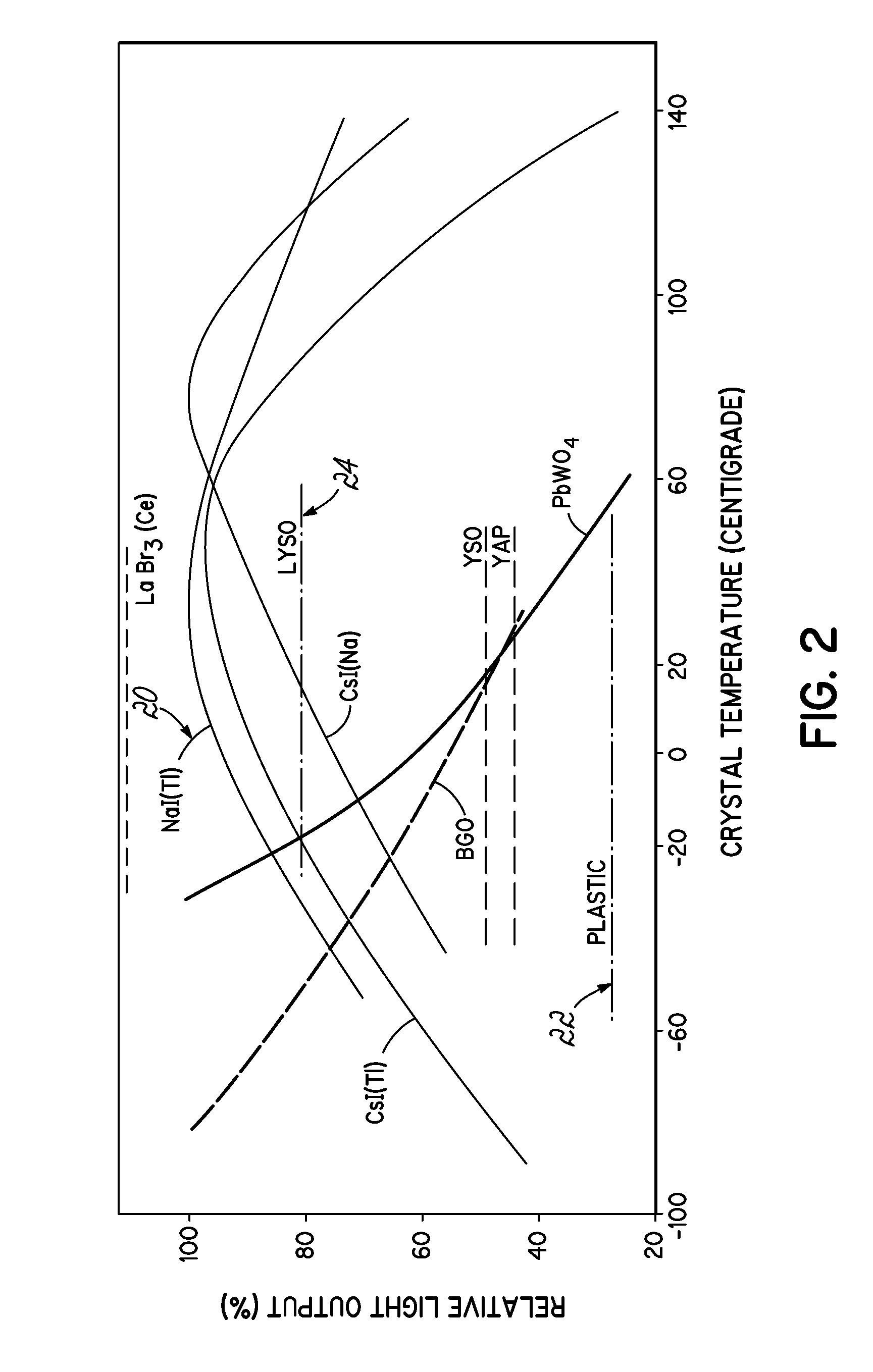Automatic gain stabilization and temperature compensation for organic and/or plastic scintillation devices
a technology of organic and/or plastic scintillation devices and gain stabilization, which is applied in the direction of instruments, liquid/fluent solid measurements, x/gamma/cosmic radiation measurement, etc., can solve the problems of indistinguishable photopeaks, temperature related scintillation devices, and ionizing radiation measurement devices
- Summary
- Abstract
- Description
- Claims
- Application Information
AI Technical Summary
Benefits of technology
Problems solved by technology
Method used
Image
Examples
Embodiment Construction
[0022]Inexpensive plastic scintillators are popular because they may easily be machined into practically any shape, including fibers, bars, etc. Furthermore, the advance of technology in the production of robust and reliable photomultiplier tubes assists in making application of scintillation detectors for measurements in difficult environmental conditions a more attractive alternative. However, scintillation probes are known to be very unstable without gain control. To cope with stability problems, an automatic gain control circuit may be used to assist in achieving acceptable stability of measurements. This may be especially important when continuous on-line measurements are to be carried out in difficult environmental conditions, where, e.g., a wide range of temperature changes may occur.
[0023]Plastic scintillators, such as polystyrene for example, are inexpensive and are easy to form into bars, fibers, or other configurations. Unfortunately, these plastic scintillators do not pr...
PUM
 Login to View More
Login to View More Abstract
Description
Claims
Application Information
 Login to View More
Login to View More - R&D
- Intellectual Property
- Life Sciences
- Materials
- Tech Scout
- Unparalleled Data Quality
- Higher Quality Content
- 60% Fewer Hallucinations
Browse by: Latest US Patents, China's latest patents, Technical Efficacy Thesaurus, Application Domain, Technology Topic, Popular Technical Reports.
© 2025 PatSnap. All rights reserved.Legal|Privacy policy|Modern Slavery Act Transparency Statement|Sitemap|About US| Contact US: help@patsnap.com



